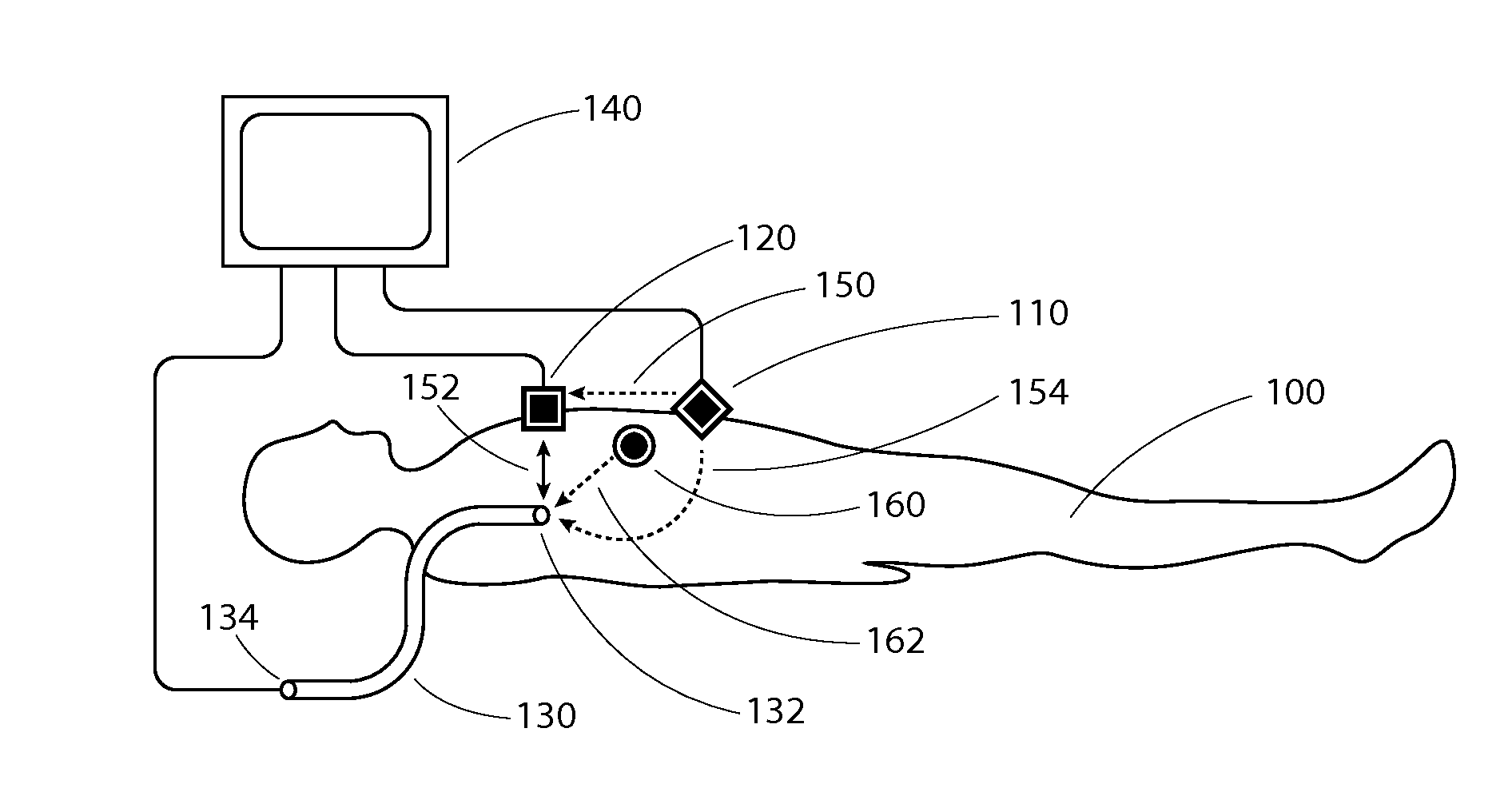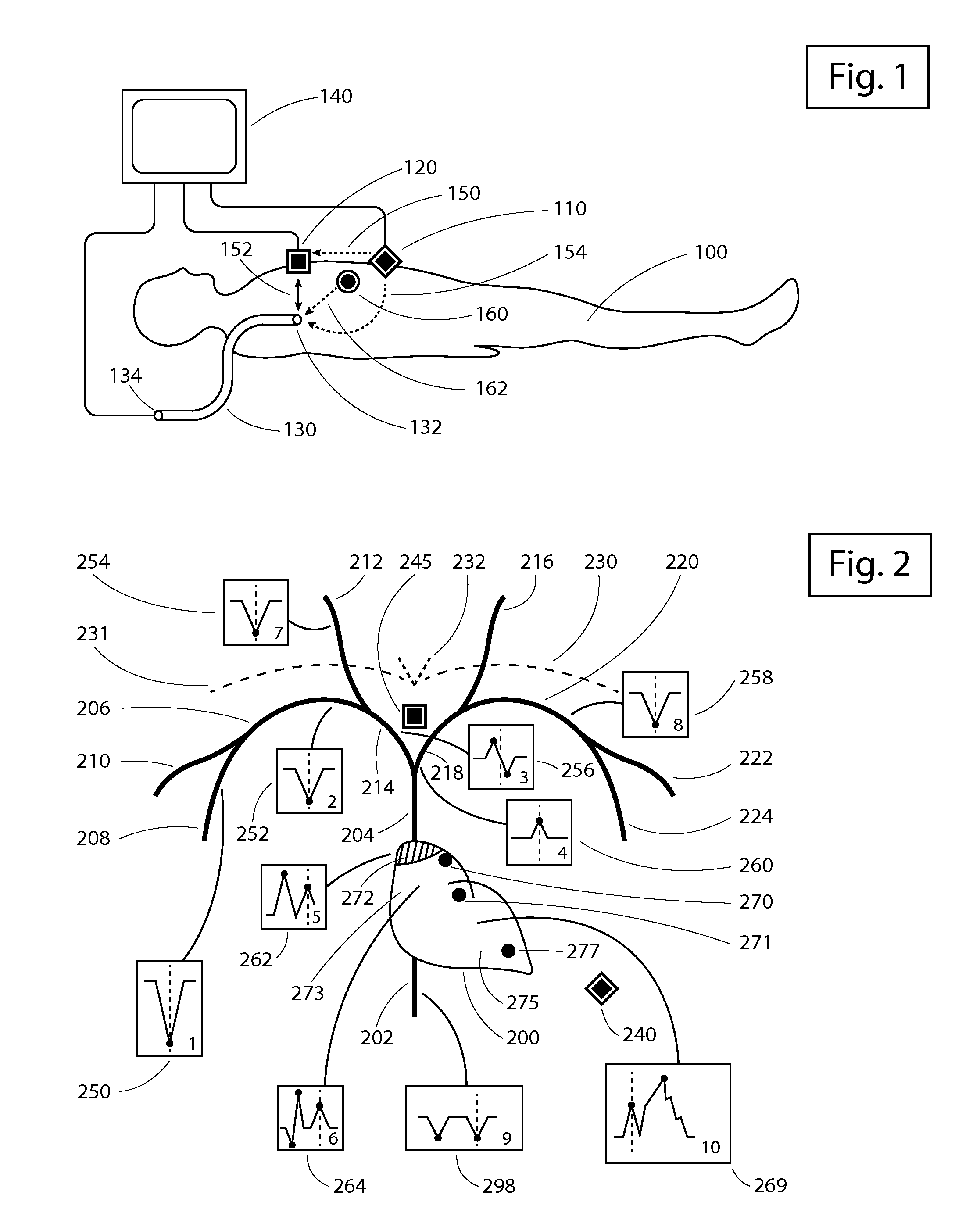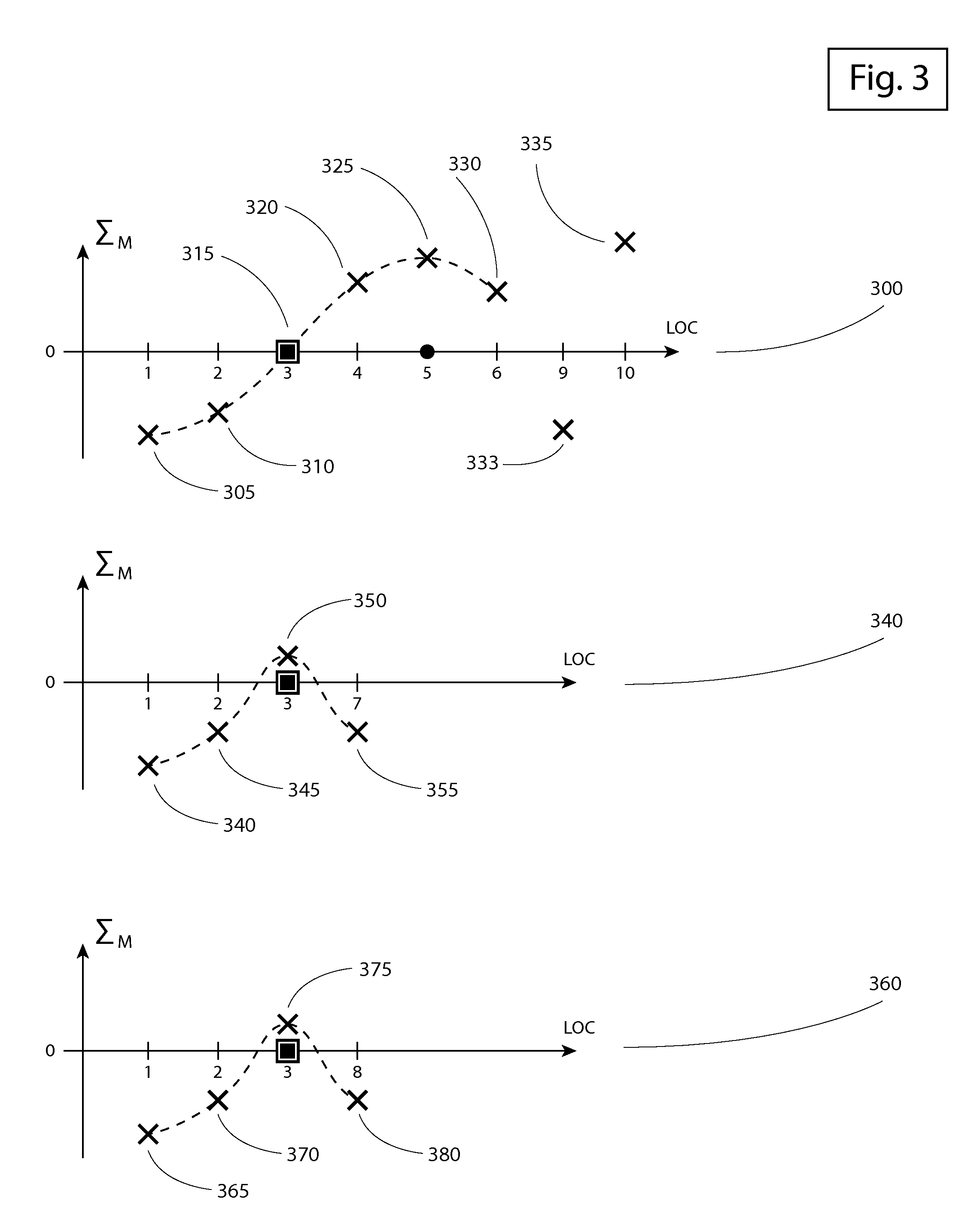Apparatus and method for intravascular catheter navigation using the electrical conduction system of the heart and control electrodes
an intravascular catheter and electrical conduction system technology, applied in the field of apparatus and method for intravascular catheter navigation using the electrical conduction system of the heart and control electrodes, can solve the problem that the ecg-based method is currently not used for catheter navigation, and achieve the effect of easy identification
- Summary
- Abstract
- Description
- Claims
- Application Information
AI Technical Summary
Benefits of technology
Problems solved by technology
Method used
Image
Examples
Embodiment Construction
[0022]FIG. 1 illustrates the apparatus connected to a patient (100) in supine position for access to the subclavian veins, internal jugular veins (IJ), SVC, CAJ, RA, IVC, and RV by upper body venous access or for access to the aortic arch, left heart and coronary arteries by arterial radial, brachial or axillary cannulation. A control electrode (CE) (120) is positioned on the patient at a location of interest. This Invention allows for tracing the tip of an intravascular catheter relative to the CE and to the electrical conduction system of the heart (ECSH) (160).
[0023]The ECSH contains the following elements:
[0024]a) the sino-atrial node (SAN), whose electrical activity can be seen as the P wave or P segment on an ECG waveform,
[0025]b) the atrio-ventricular node (AVN) including the Bundle of His (BH), whose electrical activity can be seen as the PR segment on the ECG waveform
[0026]c) the Purkinje fibers (PF), whose electrical activity can be seen as the QRS complex on the ECG wavef...
PUM
 Login to View More
Login to View More Abstract
Description
Claims
Application Information
 Login to View More
Login to View More - R&D
- Intellectual Property
- Life Sciences
- Materials
- Tech Scout
- Unparalleled Data Quality
- Higher Quality Content
- 60% Fewer Hallucinations
Browse by: Latest US Patents, China's latest patents, Technical Efficacy Thesaurus, Application Domain, Technology Topic, Popular Technical Reports.
© 2025 PatSnap. All rights reserved.Legal|Privacy policy|Modern Slavery Act Transparency Statement|Sitemap|About US| Contact US: help@patsnap.com



